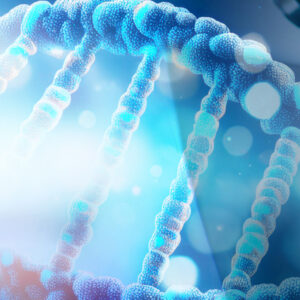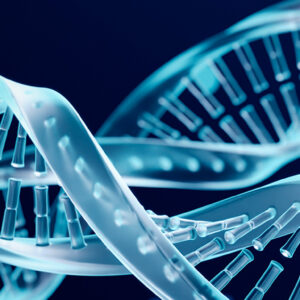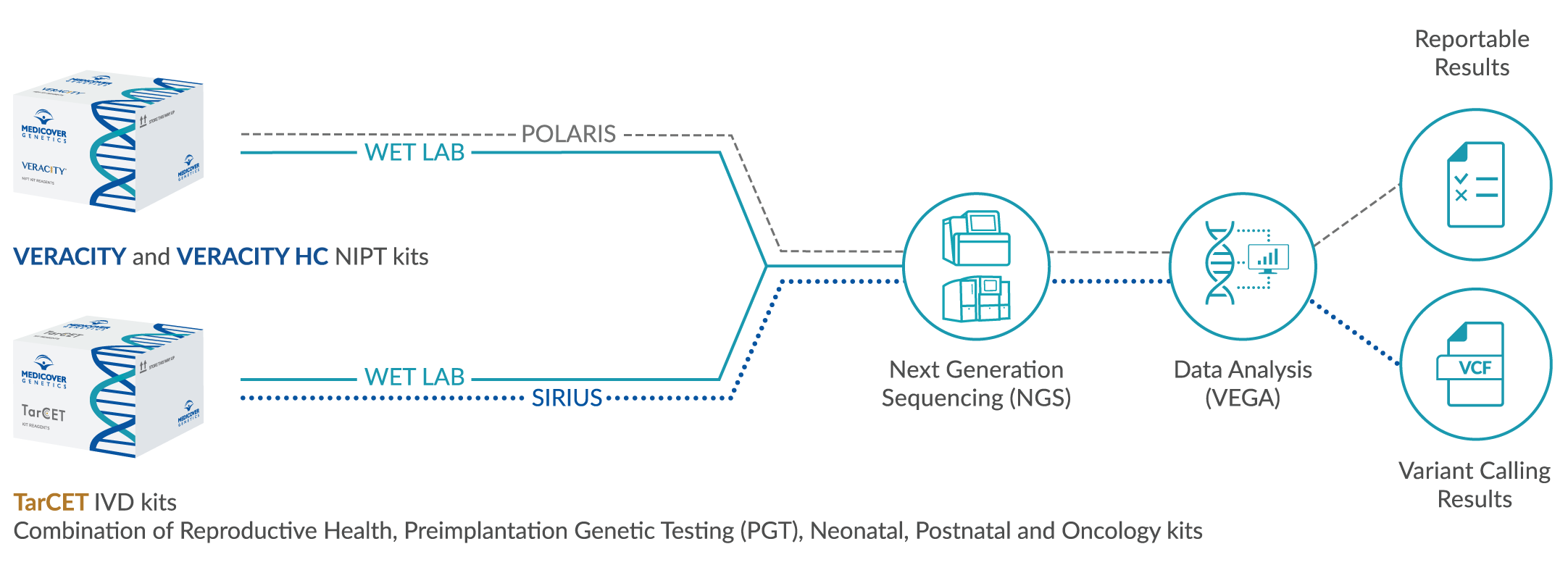HEREDITARY LEIOMYOMATOSIS AND RENAL CELL CANCER
Hereditary leiomyomatosis and renal cell carcinoma syndrome (HLRCC) is characterized by the occurrence of cutaneous and/or uterine leiomyomatosis and renal cell carcinoma. Cutaneous leiomyomas occur in about 76% of patients; uterine leiomyomas are diagnosed in almost all female carriers. The renal cell carcinomas are type 2 papillary carcinomas and have a young manifestation age (on average at the age of 40 years). In rare cases, clear cell renal cell carcinomas or Bellini duct carcinomas are also diagnosed. The risk for carriers of the development of renal cell carcinoma is between 15-30%, although the penetrance and expressivity can be very variable even within a family. Clinically, HLRCC is suspected if a patient meets the primary criterion or at least two of the secondary criteria:
Main criterion:
- histopathologically confirmed multiple cutaneous leiomyomas.
Secondary criteria:
- symptomatic and/or multiple uterine leiomyomas <40 years old;
- type 2 papillary renal cell carcinoma <40 years old;
- first degree relatives who fulfill one of the above criteria.
In case of atypical clinical presentation, measurement of fumarate hydratase enzyme activity may be helpful, as a 60% reduction in enzyme activity has been found in carriers.
HLRCC is caused by heterozygous germline variants in the FH gene. However, the formation of leiomyomas and/or renal cell carcinomas occurs only after the failure of the second intact FH allele by spontaneous somatic variants. Carriers usually have one affected parent, although the occurrence of de novo germline variants or mosaic variants is also possible. Biallelic pathogenic germline variants in the FH gene lead to fumarate hydratase deficiency (OMIM 606812).
Currently, there are no approved screening recommendations for patients and healthy carriers. Proposed recommendations are: examination of the skin with regard to leiomyoma/leimyosarcomas at one to two-year intervals, annual gynecological examinations and annual monitoring of the kidneys. Since manifestation before the age of 18 has not yet been described, the American Society of Clinical Oncology recommends predictive genetic testing of individuals at risk from the age of 18.
References
Carlo et al. 2018, JAMA Oncol (epub ahead of print) / Maher et al. 2018, World J Urol 36:1891 / Leitlinienprogramm Onkologie: Diagnostik, Therapie und Nachsorge des Nierenzellkarzinoms, Langversion 1.2, 2017 / Pithukpakorn and Toro. Hereditary Leiomyomatosis and Renal Cell Cancer. 2015. GeneReviews®: www.ncbi.nlm.nih.gov/books/NBK1252 / Haas and Nathanson 2014, Adv Chronic Kidney Dis 21:81
HEREDITARY RENAL CELL CARCINOMA
About 90% of all malignant kidney diseases are renal cell carcinomas (RCC). They account for about 3.5% of all cancers in men, but they occur less frequently in women. The average age of onset of the disease is 68 (men) and 71 (women). About 5% of all renal cell carcinomas are due to pathogenic germline variants. Renal cell carcinomas are often diagnosed at an unusually young age in carriers of a pathogenic germline variant. Hereditary renal cell carcinomas are usually part of tumor predisposition syndromes and can be synchronous or metachronous with other manifestations. The currently defined syndromes with an increased risk of renal cell carcinoma are: von Hippel-Lindau syndrome, Birt-Hogg-Dubé syndrome, hereditary papillary renal cell carcinoma (HPRCC), hereditary leiomyomatosis and renal cell carcinoma (HLRCC), and BAP1 tumor predisposition syndrome.
Renal cell carcinomas manifest less frequently in patients with hereditary paraganglioma pheochromocytoma syndrome (SDHx genes), PTEN hamartoma tumor syndrome, and tuberous sclerosis (TSC1, TSC2).
References
Maher 2018, World J Urol 36:1891 / Dwyer and Tu 2016, Am J Neuroradiol 38:469 / Haas and Nathanson 2014, Adv Chronic Kidney Dis 21:81 / Leitlinienprogramm Onkologie: Diagnostik, Therapie und Nachsorge des Nierenzellkarzinoms, Langversion 1.2, 2017 / Hartmann et al. 2010, Pathologe 31:455
HEREDITARY PAPILLARY RENAL CELL CANCER
Hereditary papillary renal cell carcinoma (HPRCC) is a predisposition syndrome with increased risk for type 1 papillary renal cell carcinoma, which is often bilateral and multifocal. The carcinomas develop relatively late — between the age of 50 and 70. There is no data on prevalence, and only a few families with HPRCC are currently documented. Other manifestations in connection with HPRCC have not been reported so far.
HPRCC is due to gain-of-function variations in the MET proto-oncogene. MET encodes a receptor tyrosine kinase that, after ligand binding and dimerization, induces a series of intracellular signalling pathways, thereby promoting cell growth, proliferation and migration. In contrast to most syndromes with an increased predisposition to the development of tumors, genetic changes in MET lead to an increase in function, which results in increased kinase activity. However, the development of renal cell carcinomas probably only occurs after spontaneous, somatic duplication of the mutated MET allele.
Currently, there are no recommendations for preventive screening measures for carriers and persons at risk. An annual MRI examination of the kidneys has been suggested.
References
Maher 2018, World J Urol 36:1891 / Leitlinienprogramm Onkologie: Diagnostik, Therapie und Nachsorge des Nierenzellkarzinoms, Langversion 1.2, 2017 / Dwyer and Tu 2016, Am J Neuroradiol 38:469 / Haas and Nathanson 2014, Adv Chronic Kidney Dis 21:81 / Hartmann et al. 2010, Pathologe 31:455
Birt-Hogg-Dubé syndrome (BHDS) is an extremely rare hereditary disease (prevalence approximately 1:200,000), which often remains undiagnosed. BHDS is associated with fibrofolliculomas of the skin, lung cysts and a tendency to spontaneous pneumothorax, as well as renal cell carcinomas. Renal cell carcinomas occur in about 25% of the carriers and have different histologies: they can be chromophobic, oncocytic, are rarely clear cell or papillary, or they can appear as hybrid tumors. If a hybrid tumor is detected, a BHDS clarification should always be performed. Clinically, BHDS is considered confirmed if one of the following main criteria or at least two of the secondary criteria are fulfilled:
Main criteria:
- at least five fibrofolliculomas in adults, at least one histologically confirmed; or
- detected pathogenic variant in the FLCN gene.
Secondary criteria:
- multiple lung cysts (bilateral, basal localized), with or without spontaneous pneumothorax;
- renal carcinoma (<50 yrs), or multifocal or bilateral renal carcinoma with mixed chromophobic or oncocytic histology; and
- a first degree relative with BHDS.
BHDS is an autosomal dominantly inherited condition caused by genetic variants that lead to loss-of-function of the FLCN gene (also called BHD). In about 90% of patients who meet the clinical criteria for BHDS, pathogenic variants in FLCN can be identified by sequencing and copy number variation (CNV) analysis; in about 10%, no pathogenic variant is detected in FLCN by these techniques. Other susceptible genes for BHDS are not yet known.
Currently, there are no defined precautionary screening recommendations for those affected and healthy carriers. An annual MRI examination of the kidneys from the age of 19 has been suggested for carriers and persons at risk. Cigarette smoke and radiation exposure should be avoided, as well as high ambient pressure, which can trigger spontaneous pneumothorax. Since onset before the age of 18 has not yet been documented, the American Society of Clinical Oncology recommends predictive genetic testing of persons at risk from the age of 18.
References
Carlo et al. 2018, JAMA Oncol (epub ahead of print) / Maher et al. 2018, World J Urol 36:1891 / Leitlinienprogramm Onkologie: Diagnostik, Therapie und Nachsorge des Nierenzellkarzinoms, Langversion 1.2, 2017 / Toro JR. Birt-Hogg-Dubé Syndrome. 2014. GeneReviews®, www.ncbi.nlm.nih.gov/books/NBK1522/





















